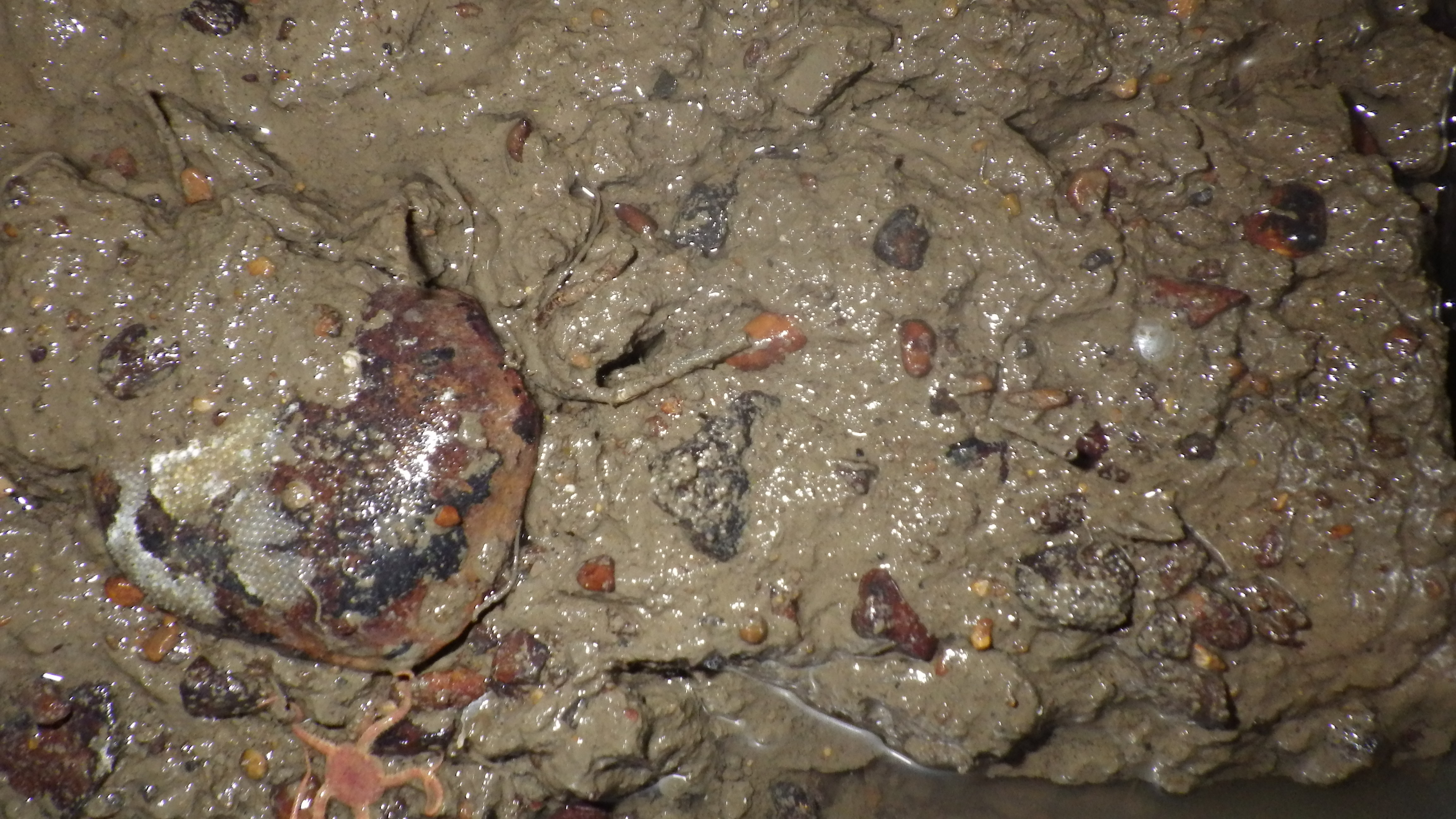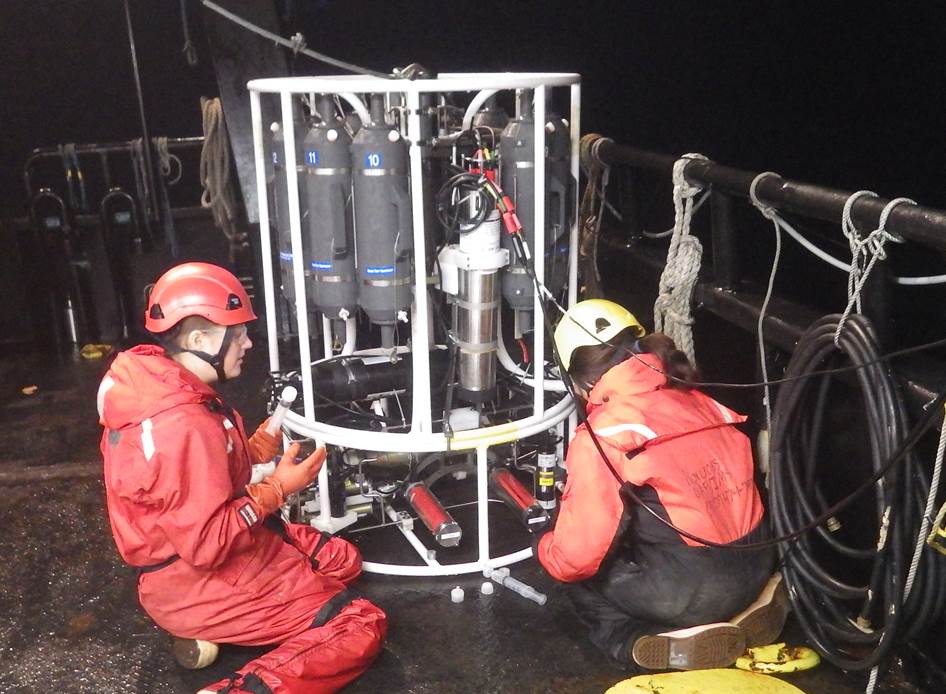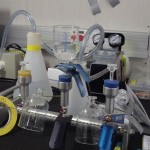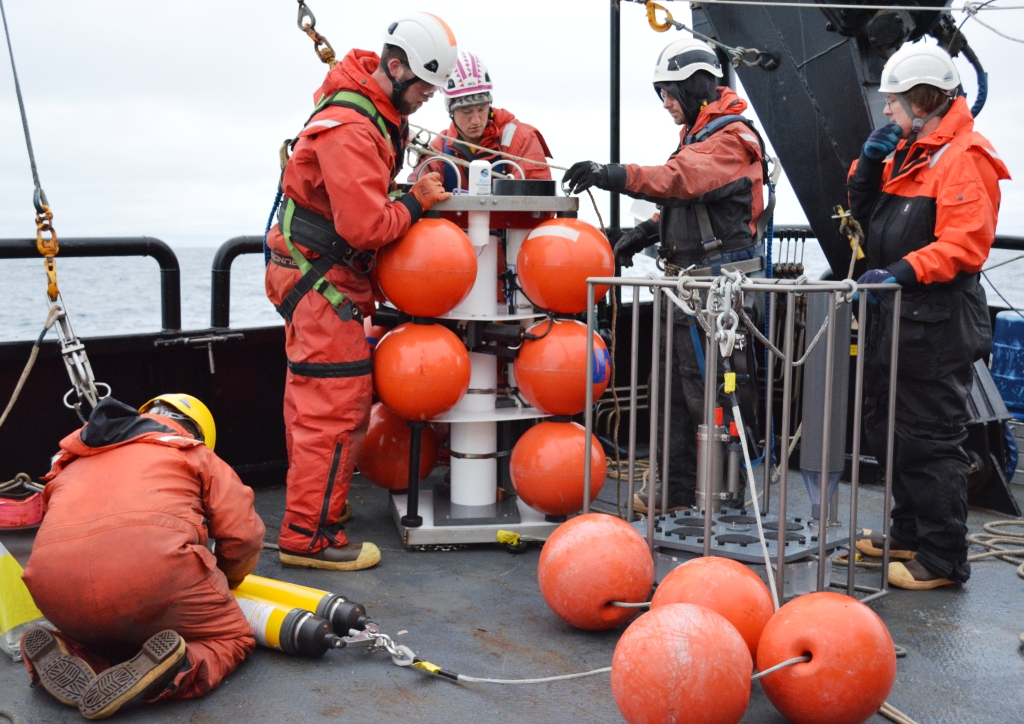 Sediment grain size and the organic content within sediments are important metrics for benthic organisms in terms of their habitat and food web requirements. For example, coarser sediments favor benthic organisms that need a hard substrate to settle on, while finer sediments favor organisms that burrow into the sediment or move over the sediment to feed on the organic matter. Sediment characteristics are being determined from small sediment subsamples from van Veen grabs. [AMBON scientist: Lee Cooper]
Sediment grain size and the organic content within sediments are important metrics for benthic organisms in terms of their habitat and food web requirements. For example, coarser sediments favor benthic organisms that need a hard substrate to settle on, while finer sediments favor organisms that burrow into the sediment or move over the sediment to feed on the organic matter. Sediment characteristics are being determined from small sediment subsamples from van Veen grabs. [AMBON scientist: Lee Cooper]
Nutrients
Nutrients are essential for phytoplankton production and thus the energy available to support energy flow through the marine ecosystem. Macronutrients (nitrate, phosphate, silicate, ammonium) are collected from rosette bottles during the CTD casts at multiple depths and later processed on a Nutrient Analyzer. [AMBON scientist: Lee Cooper]
Hydrography
 Water masses enter the Chukchi Sea from the Pacific through Bering Strait and are then modified during their mostly northward flow on the shelf. The water masses are mainly characterized by their temperature, salinity and nutrient content. The relatively warm, fresh and nutrient poor Alaska Coastal Water hugs the Alaska coast. The middle shelf is a mixture of Bering shelf and Anadyr water, characterized by colder temperatures, higher salinity and high nutrients. Winter water is very cold and salty and is produced during sea ice formation on the shelf in winter. During AMBON, hydrographic conditions are measured from temperature and salinity profiles taken with a Seabird SBE55 CTD. [AMBON scientist: Seth Danielson]
Water masses enter the Chukchi Sea from the Pacific through Bering Strait and are then modified during their mostly northward flow on the shelf. The water masses are mainly characterized by their temperature, salinity and nutrient content. The relatively warm, fresh and nutrient poor Alaska Coastal Water hugs the Alaska coast. The middle shelf is a mixture of Bering shelf and Anadyr water, characterized by colder temperatures, higher salinity and high nutrients. Winter water is very cold and salty and is produced during sea ice formation on the shelf in winter. During AMBON, hydrographic conditions are measured from temperature and salinity profiles taken with a Seabird SBE55 CTD. [AMBON scientist: Seth Danielson]
Chlorophyll a
 Chlorophyll a is a measure of phytoplankton biomass in the water column, or settled onto the sediment. It gives us a measure of high and low productivity regions. A comparison between chlorophyll a in the water column and the sediment can also inform us how tightly linked the pelagic and the benthic systems are. Chlorophyll a from seawater samples from CTD casts at multiple depths, as well as surface sediment samples from van Veen grabs, is determined fluorometrically. [AMBON scientist: Lee Cooper]
Chlorophyll a is a measure of phytoplankton biomass in the water column, or settled onto the sediment. It gives us a measure of high and low productivity regions. A comparison between chlorophyll a in the water column and the sediment can also inform us how tightly linked the pelagic and the benthic systems are. Chlorophyll a from seawater samples from CTD casts at multiple depths, as well as surface sediment samples from van Veen grabs, is determined fluorometrically. [AMBON scientist: Lee Cooper]


